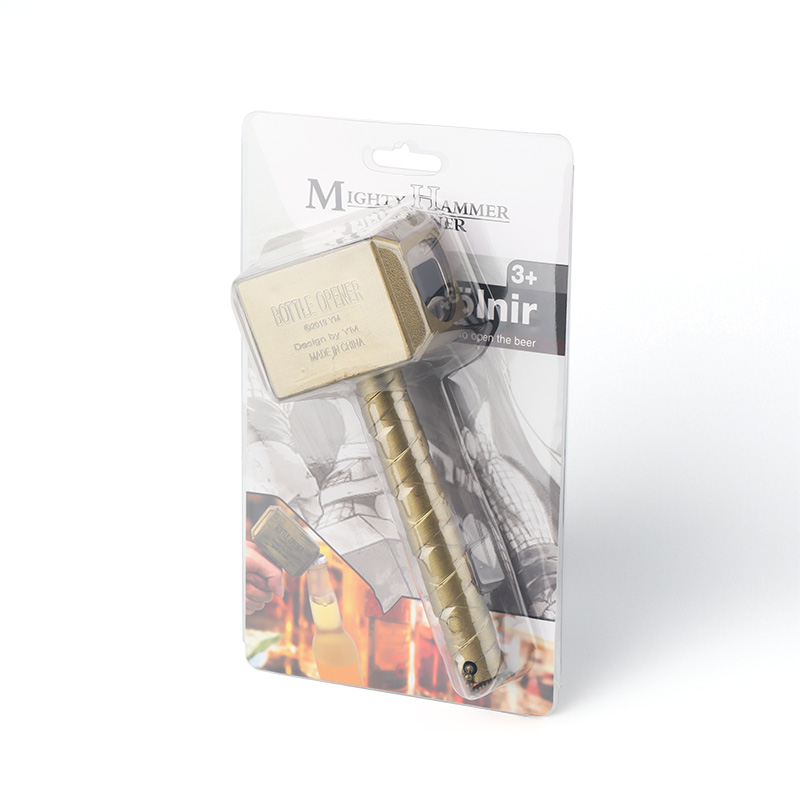Введение в блистерную упаковку и ее преимущества

Блистерная упаковка обладает рядом преимуществ с точки зрения демонстрации и защиты продукции. Жесткий пластиковый корпус блистерной упаковки защищает продукт от механических повреждений при транспортировке или обращении в магазине. Кроме того, блистерная упаковка обеспечивает четкий обзор продукта, позволяя покупателям увидеть его перед покупкой. Эта особенность особенно полезна для продуктов, требующих визуального осмотра, таких как фармацевтические препараты. Блистерная упаковка также предотвращает вскрытие и загрязнение, обеспечивая безопасность и целостность продукта.
Использование пластика в блистерной упаковке играет решающую роль в ее эффективности как упаковочного решения. ПВХ и ПЭТ - прочные материалы, способные выдержать суровые условия транспортировки и обработки. Кроме того, пластик легко поддается формовке, что позволяет производителям создавать нестандартные формы и полости, идеально подходящие для продукта. Оборудование для блистерной упаковки создает полость из алюминиевой фольги или пластика, которая затем заполняется продуктом. Основу блистерной упаковки составляет кусок термоформованного пластика, подложка (картон или алюминиевая карта) или другой кусок пластика. В целом, использование пластика в блистерной упаковке обеспечивает защиту продукции, защиту от вскрытия и визуальную привлекательность для потребителей.
Виды пластика, используемого для блистерной упаковки
Поливинилхлоридный (ПВХ) пластик - наиболее часто используемый материал для блистерной упаковки и коробочных вкладышей. Это прочный и универсальный пластик, который легко поддается формовке в различные формы и размеры. ПВХ часто используется для создания блистерных упаковок, поскольку это доступный материал. Как правило, для изготовления блистерных упаковок используются листы ПВХ толщиной 0,25 мм и более. Однако использование ПВХ в упаковке вызывает опасения из-за его потенциального воздействия на окружающую среду и токсичности. Поэтому в упаковочной промышленности ищут альтернативы ПВХ.
Полиэтилентерефталат (ПЭТ) - еще один популярный материал, используемый для блистерной упаковки. ПЭТ - это прозрачный, прочный и легкий пластик, который обычно используется для изготовления бутылок для воды и упаковки типа "клэпшелл". Он также легко поддается термоформовке и может использоваться для изготовления упаковок для безрецептурных лекарств или блистерных упаковок. ПЭТ является пластиком, пригодным для вторичной переработки, и считается более экологичной альтернативой ПВХ. Однако он дороже ПВХ, что может ограничить его применение в некоторых областях.
Полипропиленовый (ПП) пластик является новой альтернативой ПВХ в блистерной упаковке. По проницаемости водяных паров полипропилен сравним с ПВХ с PVDC-покрытием, что делает его подходящей альтернативой для некоторых применений. ПП также является пластиком, пригодным для вторичной переработки, и считается более экологичным вариантом, чем ПВХ. Однако он дороже ПВХ и ПЭТ, что может ограничить его применение в некоторых областях. В целом, выбор пластика для блистерной упаковки зависит от различных факторов, включая стоимость, воздействие на окружающую среду и специфические потребности упаковываемого продукта.
Факторы, которые следует учитывать при выборе подходящего пластика для блистерной упаковки
Когда речь идет о выборе подходящего пластика для блистерной упаковки, необходимо учитывать совместимость с продуктом. Пластиковый материал должен быть совместим с продуктом, чтобы не вступать с ним в реакцию и не повреждать его. Среди широко используемых пластиков для блистерной упаковки - ПЭТ (полиэтилентерефталат), ПЭВП (полиэтилен высокой плотности) и ПЭНП (полиэтилен низкой плотности). Каждый из этих материалов обладает уникальными свойствами, которые делают их подходящими для конкретных продуктов и применений.
Еще одним важным моментом при выборе пластиковых материалов для блистерной упаковки является их воздействие на окружающую среду и устойчивость. С ростом осведомленности о негативном влиянии пластика на окружающую среду все больше компаний выбирают экологичные упаковочные решения. Блистерные упаковки без пластика могут быть изготовлены из таких материалов, как картон, волокно или биоразлагаемые пластики. Кроме того, использование переработанных материалов для блистерной упаковки помогает минимизировать воздействие на окружающую среду. Выбирая экологичные пластиковые материалы для блистерной упаковки, компании могут уменьшить свой углеродный след и внести вклад в более устойчивое будущее.
Стоимость и эффективность производства также являются важными факторами, которые необходимо учитывать при выборе пластиковых материалов для блистерной упаковки. Блистерная упаковка - экономически выгодный вариант упаковки продукции, но выбор пластикового материала может повлиять на общую стоимость. Например, ПВХ (поливинилхлорид) является популярным выбором для блистерной упаковки благодаря своей низкой стоимости и простоте производства. Однако недавние экономические и экологические сдвиги привели к переходу на более экологичные и экономичные материалы, такие как биопластики, изготовленные из сахарного тростника. Внимательно изучив стоимость и эффективность производства пластиковых материалов, компании могут выбрать наиболее подходящий вариант для своих конкретных потребностей в упаковке.
Сопутствующие товары























